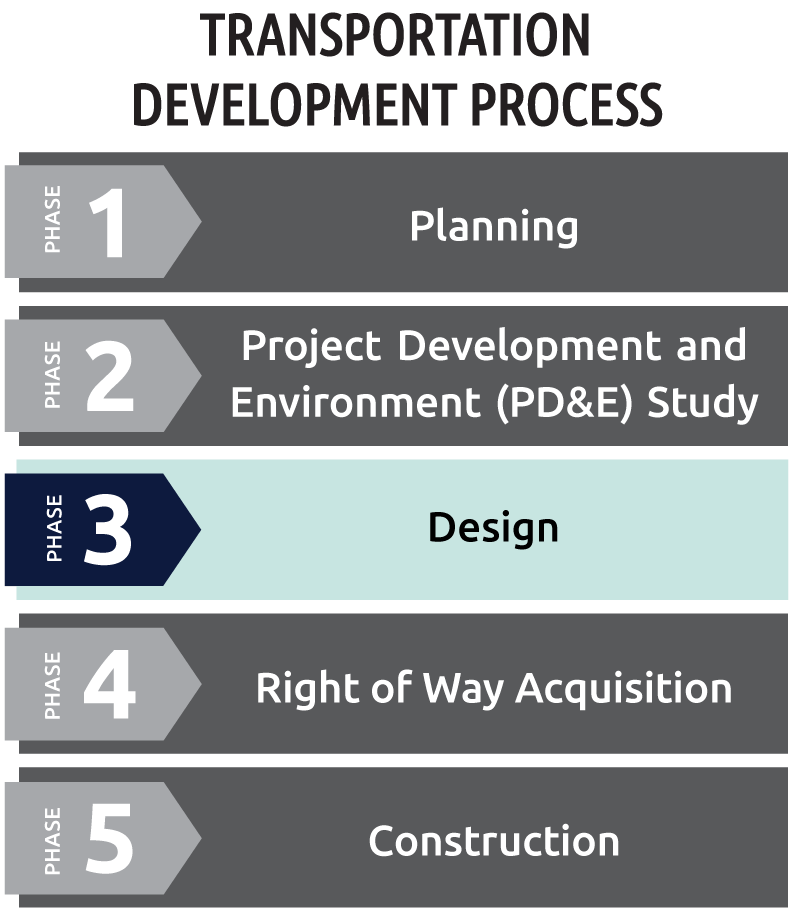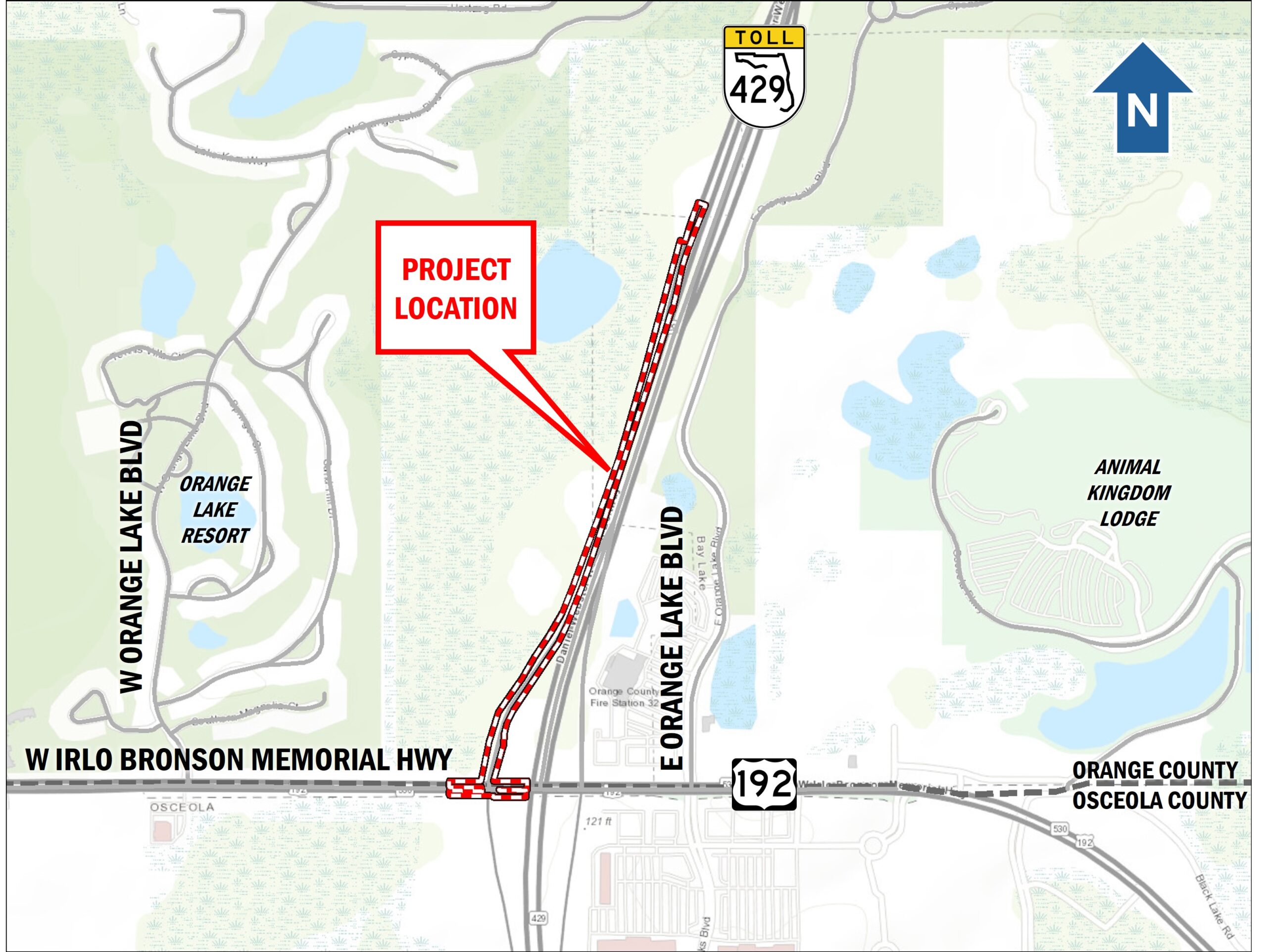Introduction
Florida’s Turnpike Enterprise, part of the Florida Department of Transportation (FDOT), is designing Transportation System Management and Operations (TSM&O) improvements for the State Road (SR) 429 southbound exit ramp at the US 192 interchange in Orange County. This project is in Design, which is the third phase of the FDOT project development process. During this phase, construction plans, specifications, and final estimates to build a project are developed.

The TSM&O improvements are proposed with the goals of:
- Widening the existing single lane ramp from SR 429 to US 192 to a multi-lane ramp.
- Lengthening the ramp from 1,500 feet to 4,300 feet to a location near the existing toll plaza.
- Reconfiguring the ramp terminal at the intersection with US 192 to include three right turn lanes and two left turn lanes.
- Changing the southbound US 192 off ramp so traffic will exit SR 429 at the existing southbound cash toll plaza exit. The cash lanes will be converted to accept electronic tolls only.
- Drainage modifications
- Modifying SR 429 southbound shoulders
- Adding retaining walls to minimize impacts to existing stormwater facilities
- Modifications to signage, drainage, lighting, and intelligent transportation system (ITS) components
- Modifications to traffic signals to match the new ramp terminal configuration including replacement of existing mast arm signal poles and all other signal equipment affected by the ramp widening.
Project Background
Florida’s Turnpike Enterprise concurred with the recommendations of the PD&E Study to Widen Western Beltway (SR 429) from North of I-4/SR 429 Interchange to Seidel Road. The recommendations included TSM&O improvements at State Road 429’s intersection with US 192.
Study Area

Innovation
The Enterprise is at the forefront of planning for a safer, more efficient, and technologically advanced transportation system for the future. The Enterprise continually seeks opportunities to integrate emerging transportation technologies that can help reduce congestion, create mobility choices, minimize environmental impacts, and improve safety. The Enterprise also recognizes that connected and automated vehicle (CAV) technologies hold unprecedented opportunities for enhancing mobility and increasing safety on our roadways.
If you have an idea for a technology or innovation that you would like to be considered as part of this study, please reach out to one of the contacts in the Stay Connected section below.
Schedule

Stay Connected
Project inquiries, comments, innovation/technology ideas, or requests to be added to the project mailing list, can be mailed or emailed to:
MICHAEL LEO, P.E.
Media inquiries should be directed to the FDOT, Florida’s Turnpike Enterprise, Public Information Office using the contact information below:
Fiorella Teodista
Communications Outreach Coordinator
Florida’s Turnpike Enterprise
If you choose to provide feedback on this site or in an email, such information is a public record under Florida’s Government in the Sunshine Laws and available for public inspection upon demand. Under Florida law, email addresses are public records. If you do not want your email address released in response to a public records request, do not send electronic mail to this entity. Instead, contact this office by phone or in writing.
Public participation is solicited without regard to race, color, national origin, age, sex, religion, disability, or family status.
If you need special accommodations under the Americans with Disabilities Act or require translation services (free of charge), please contact the Project Manager using the contact information listed on this page. If you are hearing or speech impaired, please contact the agency using the Florida Relay Service, 1 (800) 955-8771 (TDD) or 955-8770 (voice).
The environmental review, consultation, and other actions required by applicable federal environmental laws for this project are being, or have been, carried out by the Florida Department of Transportation pursuant to 23 United States Code Section 327 and a Memorandum of Understanding dated December 14, 2016 and executed by the Federal Highway Administration and FDOT.
